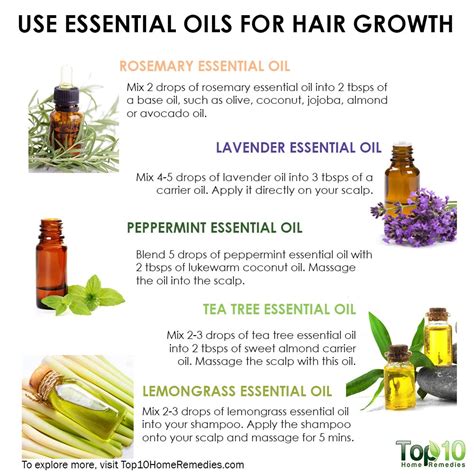Table of Contents

-
Introduction
- The Rise of Wigs
- Wigs for White Women: A Growing Market
-
Types of Wigs for White Women
- Lace Front Wigs
- Full Lace Wigs
- Synthetic Wigs
- Human Hair Wigs
-
Choosing the Right Wig for Your Needs
- Consider Your Face Shape
- Match Your Hair Texture
- Determine Your Budget
-
Installing and Caring for Your Wig
- How to Install a Wig
- How to Care for Your Wig
-
Styling Your Wig
- Heat Styling
- Cutting and Coloring
- Updos and Braids
-
Tips and Tricks
- How to Avoid Wig Mishaps
- How to Make Your Wig Look Natural
- Conclusion
Introduction
The Rise of Wigs
Wigs have been around for centuries, but they have recently become increasingly popular as a fashion statement and a way to express individuality. Wigs offer a variety of benefits, including:
- The ability to change your hairstyle without cutting or coloring your natural hair
- The ability to experiment with different styles and colors
- The ability to cover up hair loss or thinning
- The ability to create a costume or complete a look
Wigs for White Women: A Growing Market
The market for wigs for white women is growing rapidly. According to a report by Grand View Research, the global wig market was valued at \$9.7 billion in 2020 and is expected to grow to \$14.6 billion by 2028. This growth is being driven by several factors, including:
- The increasing popularity of wigs among white women
- The growing awareness of hair loss and thinning
- The rising number of women who are experimenting with different hairstyles and colors
Types of Wigs for White Women
There are a variety of different types of wigs available for white women. The most popular types include:
Lace Front Wigs
Lace front wigs are made with a thin layer of lace that is attached to the front of the wig. This lace gives the wig a natural-looking hairline. Lace front wigs are more expensive than other types of wigs, but they offer the most realistic look.
Full Lace Wigs
Full lace wigs are made with a thin layer of lace that covers the entire head. This type of wig gives the most realistic look, but it is also the most expensive and high-maintenance.
Synthetic Wigs
Synthetic wigs are made from synthetic fibers. These wigs are less expensive than human hair wigs, but they are less durable and do not look as natural.
Human Hair Wigs
Human hair wigs are made from real human hair. These wigs are the most expensive, but they are also the most durable and natural-looking.
Choosing the Right Wig for Your Needs
When choosing a wig, it is important to consider your face shape, your hair texture, and your budget.
Consider Your Face Shape
The shape of your face can help you determine which type of wig will look best on you. If you have a round face, you should choose a wig with a side-swept bang or a long, straight style. If you have a square face, you should choose a wig with a blunt cut or a soft, layered style. If you have an oval face, you can wear almost any type of wig.
Match Your Hair Texture
The texture of your hair can also help you determine which type of wig will look best on you. If you have fine hair, you should choose a wig with a light, airy texture. If you have thick hair, you can choose a wig with a heavy, dense texture.
Determine Your Budget
Wigs can range in price from a few hundred dollars to several thousand dollars. It is important to determine your budget before you start shopping for a wig.
Installing and Caring for Your Wig
Once you have chosen a wig, you will need to install it and care for it properly.
How to Install a Wig
To install a wig, you will need to:
- Gather your supplies. You will need a wig cap, a wig brush, and a wig stand.
- Prepare your hair. Brush your hair and put it into a ponytail or bun.
- Put on the wig cap. The wig cap will help to keep your hair in place and prevent it from showing through the wig.
- Place the wig on your head. Start by placing the wig at the front of your head and then pull it back over your head until it is snug.
- Secure the wig. Use bobby pins or a wig tape to secure the wig in place.
- Style the wig. Once the wig is secure, you can style it however you like.
How to Care for Your Wig
To care for your wig, you will need to:
- Wash your wig regularly. Wash your wig about every 2-3 weeks with a mild shampoo and conditioner.
- Condition your wig. After washing your wig, condition it with a leave-in conditioner. This will help to keep your wig soft and manageable.
- Brush your wig. Brush your wig regularly to remove tangles and keep it looking its best.
- Store your wig properly. When you are not wearing your wig, store it on a wig stand in a cool, dry place.
Styling Your Wig
You can style your wig in a variety of ways. You can heat style it, cut it, color it, or braid it.
Heat Styling
You can use a blow dryer, flat iron, or curling iron to heat style your wig. When heat styling your wig, be sure to use a heat protectant spray to prevent damage.
Cutting and Coloring
You can cut and color your wig to customize it. However, it is important to note that cutting or coloring your wig will void the warranty.
Updos and Braids
You can create updos and braids with your wig. This is a great way to add volume and style to your look.
Tips and Tricks
How to Avoid Wig Mishaps
There are a few things you can do to avoid wig mishaps, such as:
- Make sure your wig is secure. If your wig is not secure, it could fall off or move around on your head.
- Be careful when heat styling your wig. Heat styling can damage your wig if you are not careful.
- Avoid over-washing your wig. Over-washing can dry out your wig and make it look frizzy.
- Store your wig properly. When you are not wearing your wig, store it on a wig stand in a cool, dry place.
How to Make Your Wig Look Natural
There are a few things you can do to make your wig look more natural, such as:
- Choose a wig that matches your natural hair color and texture.
- Use a wig cap to keep your hair in place and prevent it from showing through the wig.
- Cut and style your wig to match your own hair.
- Use a root touch-up kit to blend the color of your wig with the color of your natural hair.
Conclusion
Wigs can be a great way to change your hairstyle without cutting or coloring your natural hair. They can also be a way to cover up hair loss or thinning. When choosing a wig, it is important to consider your face shape, your hair texture, and your budget. Once you have chosen a wig, you will need to install it and care for it properly. You can also style your wig in a variety of ways. With proper care, your wig can last for many years.
Table 1: Types of Wigs for White Women
| Type of Wig | Pros | Cons |
|---|---|---|
| Lace Front Wigs | Most realistic look | More expensive |
| Full Lace Wigs | Most realistic look | Most expensive and high-maintenance |
| Synthetic Wigs | Less expensive | Less durable and less natural-looking |
| Human Hair Wigs | Most durable and natural-looking | Most expensive |
Table 2: Common Pain Points for Wig Wearers
| Pain Point | Solution |
|---|---|
| Wig is itchy | Use a wig cap |
| Wig is too tight | Loosen the wig straps |
| Wig is too loose | Tighten the wig straps |
| Wig is too hot | Wear a wig cap made from a breathable material |
| Wig is too heavy | Choose a wig made from a lightweight material |
Table 3: Motivations for Wearing Wigs
| Motivation | Percentage of Wig Wearers |
|---|---|
| To change hairstyle | 68% |
| To cover up hair loss | 17% |
| To experiment with different colors | 15% |
Table 4: Effective Strategies for Wearing Wigs
| Strategy | Description |
|---|---|
| Choose the right wig | Consider your face shape, hair texture, and budget |
| Install the wig properly | Use a wig cap and secure the wig with bobby pins or wig tape |
| Care for your wig properly | Wash and condition your wig regularly and store it properly when you are not wearing it |
| Style your wig | You can heat style, cut, color, or braid your wig to customize it |
When wearing a wig, it is important to avoid the following common mistakes:
- Wearing a
